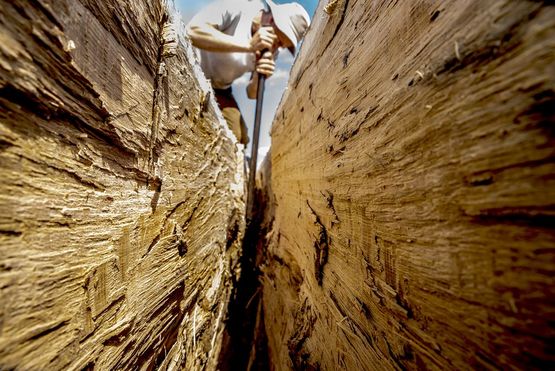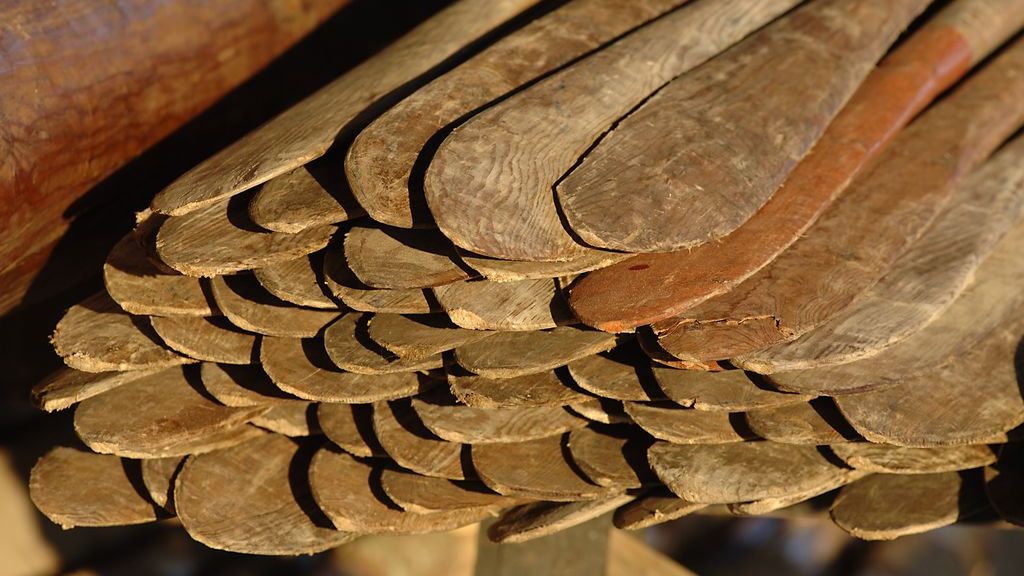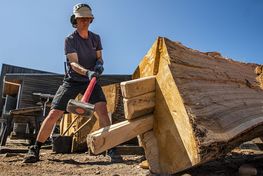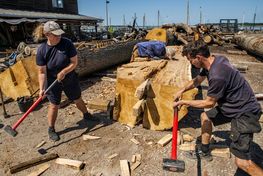The boatbuilders have been steadily working their way through the oak log from Vallø that was cleaved out at the start of June. As the sections are reduced in size, each piece is earmarked for a specific plank on Skuldelev 5 and stored in water at the harbour until they’re needed.
The first log is more or less divided up now so it’s time to turn their attention to the next oak – a 10.5m long log, which we hope will provide enough material for the remaining sections of oak planking.
Cleaving oak for Skuldelev 5: Tuesday 11/7 from 10:00
In contrast to other Danish Viking ships where oak is the building material of choice, a variety of different wood species were used for the planking on Skuldelev 5 – a small warship built around the year 1030. The first four strakes – the horizontal rows of planks which start at the keel and work their way up the hull – were made of oak. Strakes five and six are of pine reused from one or two other ships while the final strake is largely made up of ash. This too was also a re-used plank taken from another ship.
So when the boatbuilders split the next large oak from Vallø, it’ll more than likely be the last major log to be cleaved at the boatyard for some time to come. If you’re in the area, it’s worth coming to witness the spectacle. No saws were used in Viking Age boatbuilding so logs were split using wooden wedges, mallets and muscle power – just as you can see in the images here.
It sounds like a simple process but it’s one that demands a keen understanding of the material properties of oak. The goal is to attain a split that follows the line of the log’s fibres, as this will give planks that are light yet strong and flexible. And to achieve this, the boatbuilders must apply their many years of experience with cleaving to know exactly how and when to drive the split into the log, reading and responding to the material as the split progresses.





